Continued from the previous article https://blog.csdn.net/m0_74037076/article/details/129669214
Chapter Three System Analysis
System analysis is the process of analyzing domain business and establishing a new system logic model [13]. This chapter analyzes and introduces the main business processes, use cases and domain objects involved in the Pet Mall App, making full preparations for the subsequent system design and implementation. The pet mall app is mainly a communication and purchase service platform for pet owners, which can improve the time efficiency of purchasing users and provide users with more satisfactory services. Therefore, it is very important to clarify the entire purchase process of the pet mall and the corresponding situation.
3.1 Business process analysis
After research and analysis, the pet mall field includes user login, registration, product purchase, product classification, display details, shopping cart, my order, product search, and other major services, among which the process chain involved in product uploading It is relatively simple, no introduction, but the process chain involved in the design of users purchasing, placing an order, selecting an address, and generating an order is more complicated, so this chapter will describe user login, registration, obtaining products, browsing business processes, and placing an order Business processes, shopping carts and business processes for generating orders are analyzed.
3.1.1 Analysis of user login and registration
At present, the regular user login and registration system uses mobile phone number and password to log in, so this project is also developed according to this item. First, whether the data is empty is judged on both the login and registration interfaces, which ensures the robustness and fault tolerance of the program, makes the program run smoothly, and greatly improves the user's comfort and fluency. First of all, the default user has not yet registered an account. The user needs to click the registration button in the upper right corner to jump to the registration interface, and then perform the data registration operation. After the registration is successful, it will automatically return to the login interface, and then use the mobile phone number and password registered just now. Enter and click to log in, and you can jump to the main interface normally.
As shown in Figure 3.1:


Figure 3.1 Login and registration business process
3.1.2 Process flow analysis of obtaining products and product details
宠物使用用户可以进行在线商品的购买以及即感兴趣商品的浏览和查看,该app可以对商品进行分类的类型展示,采用了今日头条的顶部tab类型切换,方便用户快速定位到自己喜欢和需要的宠物商品中,在商品详情中可以查看具体的商品详情,可以产看商品的具体详细信息,如商品的图片,商品名称,商品价格,商品描述等 商品的库存以及对应的商品折扣等信息。用户根据自己的需要是否购买下单或者添加到购物车等操作具体的业务流程图如3,2 所示。
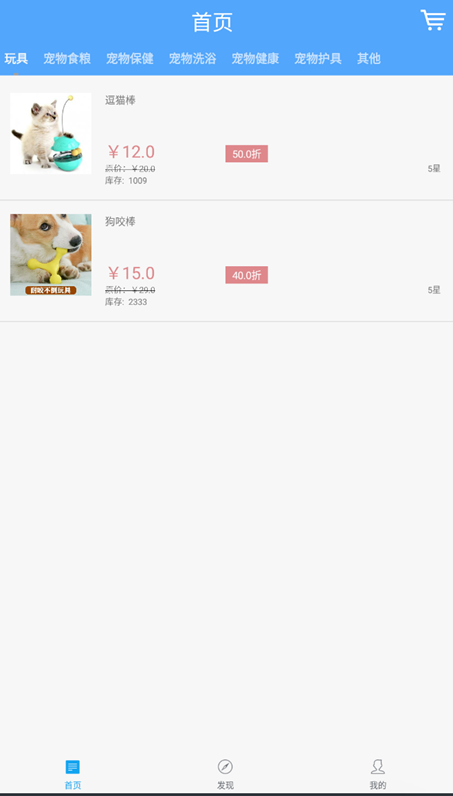

·图3.2 商品浏览展示流程图
3.1.3 购物车业务流程分析
为了满足用户选择多个商品的选择,增加了购物车的功能,在这里可以将用户选择的所有感兴趣的商品 或者需要购买的商品加入购物车进行结算,在购物车中的宠物商品用户可以进行编辑功能,自由的增加或者选择数量,或者将多选的商品进行删除操作,本着用户的第一的原则,购物车的操作较多,需要在代码设计上进入投入更多的精力。整体的流程图3.3。


图3.3 购物车流程图
3.1.4我的订单业务流程分析
用户购买完商品后,在模拟支付后会生成订单,该订单内会有用户的对应的相关信息和购买的商品的详细具信息,包含用户的收货地址相关信息,如手机号收货人。也包含购买商品的对应信息,如商品的名称,购买数量等。还包含下单时间等。用户可以根据个人信息查看自己对应的下单信息,如此用户可以更直观的查看到的自己的消费情况。整体的流程图3.3。


图3.3 我的订单流程图
3.2用例分析
本系统主要含用户和管理员两个类别,普通用户可以进行商城的商品购买,浏览选择已经商品的付款和下单,管理人员可以负责商城的商品数据的上传和处理。
3.2.1 用户登录注册用例分析
用户可以通过使用手机号进行账号的注册和申请。然后通过申请的账号进行登录到主界面即可。
1.用户的注册
该用例规定了用户如何进行账户的注册服务相关的使用

2.用户的登录
该用例规定了用户如何利用系统进行账户的登录。

3.2.2 管理员进行商品数据的上传
管理者可以通过bmob云数据库进行商品数据的上传和库存等相关数据的配置。
1.宠物商品的数据的上传商品
该用例规定了管理员如何进行宠物商品数据的上传操作
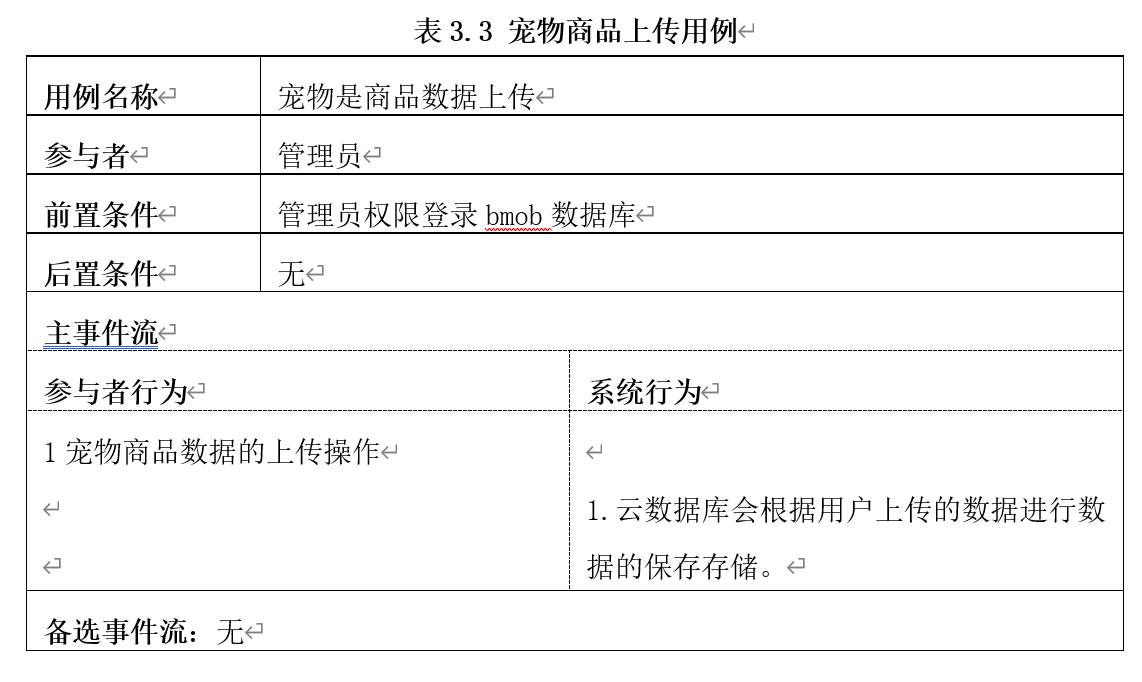
3.2.3 宠物商品的展示以及类型切换
用户可以在首页进行商品的浏览和对应宠物商品的类型的切换查看操作。
获取商品列表数据
该用例规定了用户进入主页后可以进行宠物商品列表数据的获取。
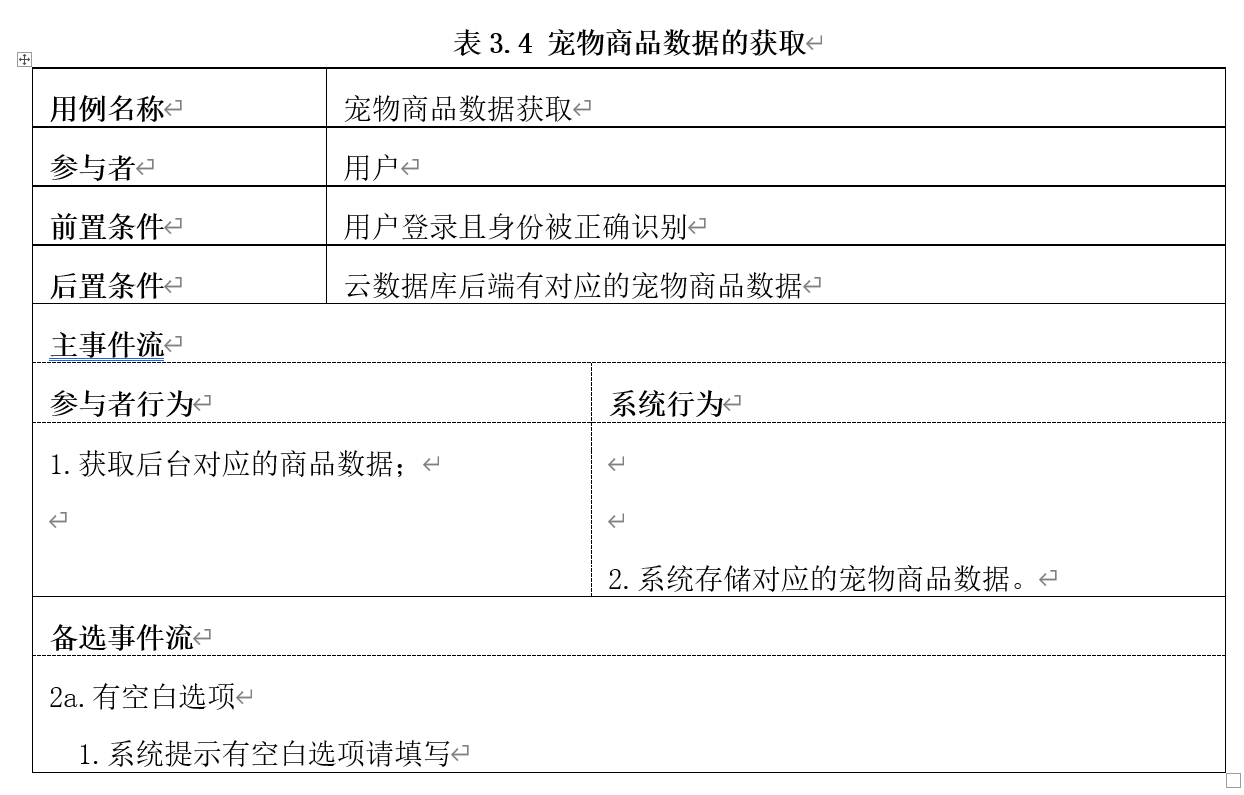
2.商品数据类型的切换
该用例规定了用户如何进行宠物商品数据的切换操作。

3.查看宠物商品具体数据
该用例规定了用户如何查看具体的宠物商品详细数据以此为例。

4.将商品加入购物车
该用例规定了用户将指定商品加入到购物车的操作用例。

3.2.4购物车相关模块分析
用户可以将选定的宠物商品加入到自己的账户对应的购物车当中,宠物用户可以根据需求对该模块进行数据操作。
1.获取购物车数据,该用例规定了用户如何查看个人的购物车。
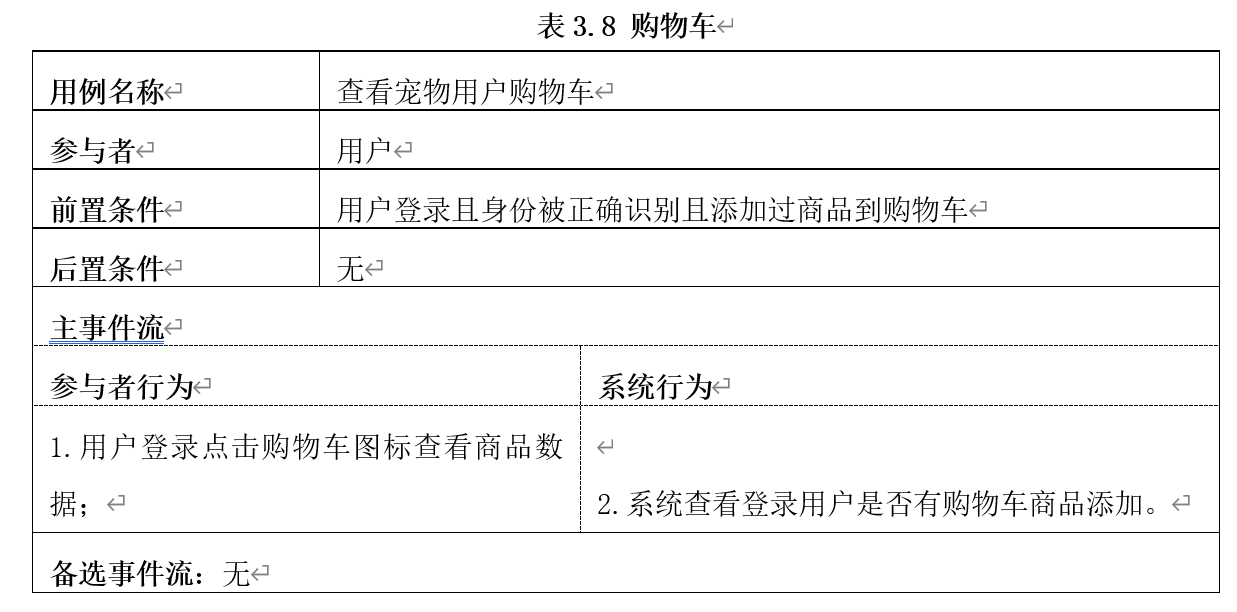
2.购物车商品编辑
用户可以将选定的宠物商品加入到自己的账户对应的购物车当中,宠物用户可以根据需求对该模块进行数据操作,比如商品的数量的修改,商品的删除等相关功能。
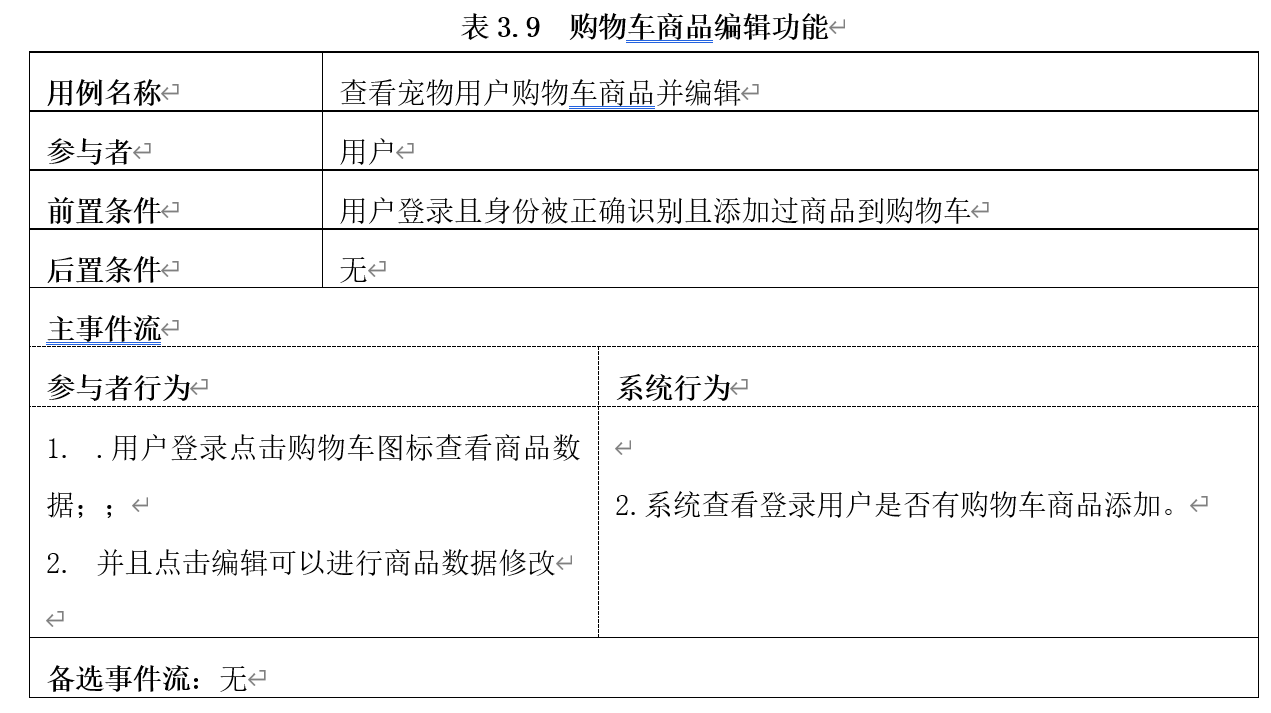
3.2.5 宠物商城订单模块用例分析
用户可以根据通过此模块查看用户自己购买商品订单列表详情数据。
1.查看个人用户的订单列表
该用例规定了用户查看个人用户的订单列表
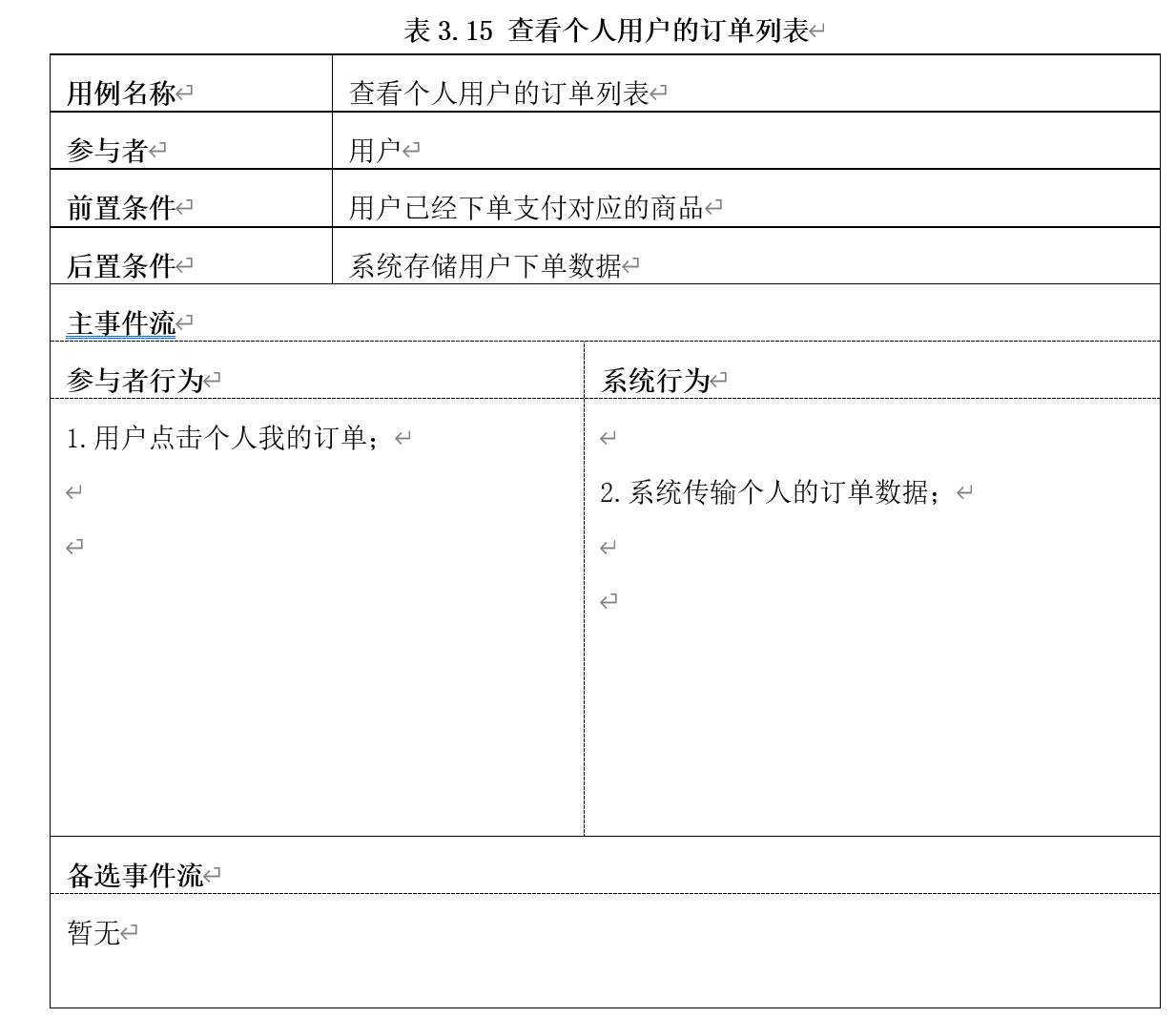
2.查看订单详情数据
该用例规定了用户如何查看个人的订单详情数据。

3.2.6 宠物商品搜索用例分析
用户可以进行宠物商品类型的指定搜索。
1.用户可以通过搜索功能查询到用户的指定商品数据进行查看。

2.用户可以通过搜索功能查询到用户的指定商品数据然后进入详情界面进行查看。

3.2.7 宠物商城支付模块用例分析
该用例因为申请支付的话需要用到公司牌照,所以目前只是做了模拟支付情况,用来展示支付样例。
1.模拟支付

2.地址选择
该用例规定了用户是如何选择收货地址的。

3.选择支付方式
该用例规定了用户选择微信还是支付宝进行账单的支付。
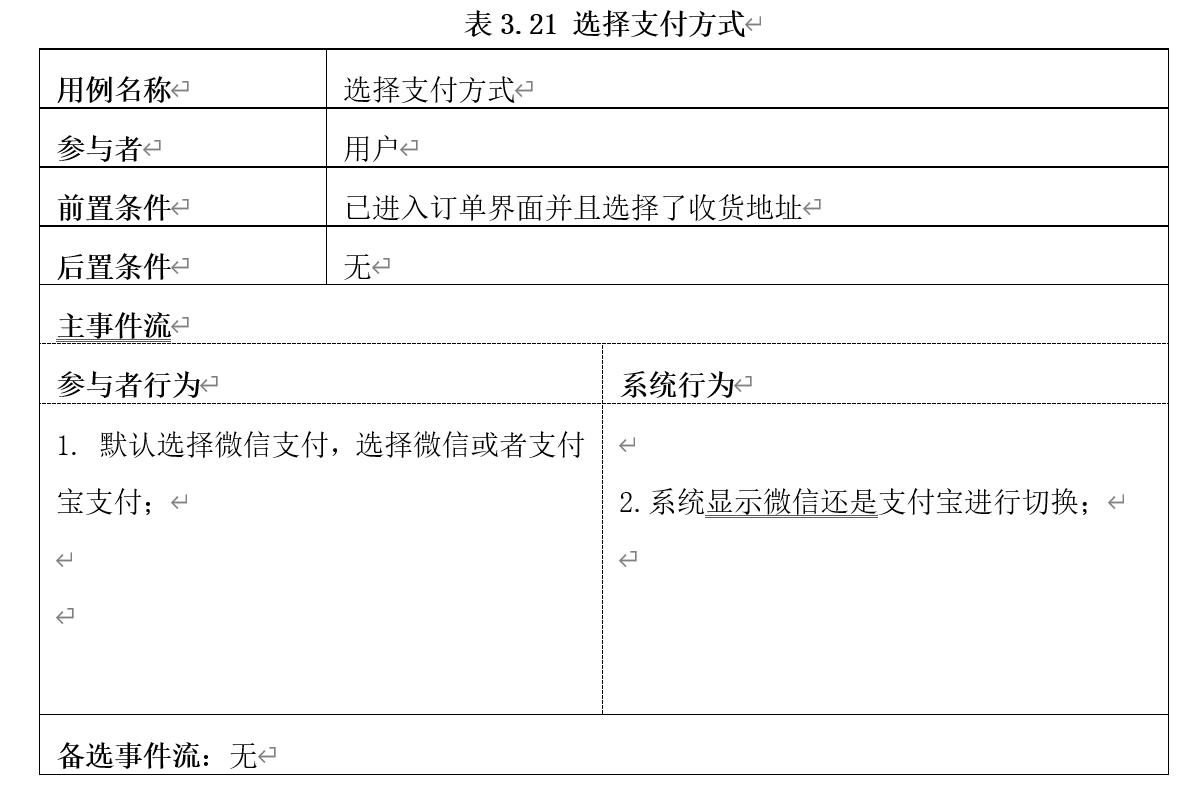
3.3 领域对象分析
宠物商城app描述了几个类之间的关系。
说明:
用户与订单是一对多的关系,一个用户可以生成多个订单,多个订单也可能属于一个用户;
用户和购物车是一对一的关系,一个用户只可以有一个购物车,一个购物车属于一个用户;
商品详情类属于公共表,所有的用户均可以查询该表获取商品数据;
用户和地址的关系是一对多的关系,一个用户可以生成多个地址,多个地址可能属于一个用户;
订单类属于公共表,所有的用户均可以查询该表获取数据;
购物车类属于公共表,所有的用户均可以查询该表获取数据。
3.3 本章小结
本章对用户和订单,商品,等相关类和操作进行了综合分析,以及业务流程的相关介绍,为了后续的系统设计奠定了理论基础。
好累啊,编辑内容太蛋疼了,又不支持直接word共享上来,大家有需要的可以联系我获取。